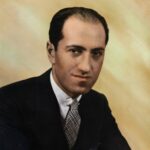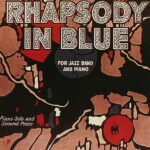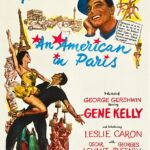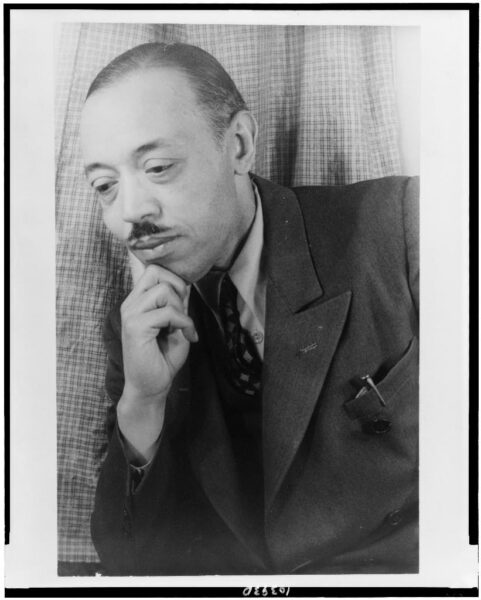 Long known as the “Dean of African-American Classical Composers,” as well as one of America’s foremost composers, William Grant Still has had the distinction of becoming a legend in his own lifetime. On May 11, 1895, he was born in Woodville (Wilkinson County) Mississippi, to parents who were teachers and musicians. They were of Negro, Indian, Spanish, Irish and Scotch bloods. When William was only a few months old, his father died and his mother took him to Little Rock, Arkansas, where she taught English in the high school. There his musical education began–with violin lessons from a private teacher, and with later inspiration from the Red Seal operatic recordings bought for him by his stepfather.
Long known as the “Dean of African-American Classical Composers,” as well as one of America’s foremost composers, William Grant Still has had the distinction of becoming a legend in his own lifetime. On May 11, 1895, he was born in Woodville (Wilkinson County) Mississippi, to parents who were teachers and musicians. They were of Negro, Indian, Spanish, Irish and Scotch bloods. When William was only a few months old, his father died and his mother took him to Little Rock, Arkansas, where she taught English in the high school. There his musical education began–with violin lessons from a private teacher, and with later inspiration from the Red Seal operatic recordings bought for him by his stepfather.
In Wilberforce University, he took courses leading to a B.S. degree, but spent most of his time conducting the band, learning to play the various instruments involved and making his initial attempts to compose and to orchestrate. His subsequent studies at the Oberlin Conservatory of Music were financed at first by a legacy from his father, and later by a scholarship established just for him by the faculty.
At the end of his college years, he entered the world of commercial (popular) music, playing in orchestras and orchestrating, working in particular with the violin, cello and oboe. His employers included W. C. Handy, Don Voorhees, Sophie Tucker, Paul Whiteman, Willard Robison and Artie Shaw, and for several years he arranged and conducted the Deep River Hour over CBS and WOR. While in Boston playing oboe in the Shuffle Along orchestra, Still applied to study at the New England Conservatory with George Chadwick, and was again rewarded with a scholarship due to Mr. Chadwicks own vision and generosity. He also studied, again on an individual scholarship, with the noted ultra-modern composer, Edgard Varese.
In the Twenties, Still made his first appearances as a serious composer in New York, and began a valued friendship with Dr. Howard Hanson of Rochester. Extended Guggenheim and Rosenwald Fellowships were given to him, as well as important commissions from the Columbia Broadcasting System, the New York Worlds Fair 1939-40, Paul Whiteman, the League of Composers, the Cleveland Orchestra, the Southern Conference Educational Fund and the American Accordionists Association. In 1944, he won the Jubilee prize of the Cincinnati Symphony Orchestra for the best Overture to celebrate its Jubilee season, with a work called Festive Overture. In 1953, a Freedoms Foundation Award came to him for his To You, America! which honored West Points Sesquicentennial Celebration. In 1961, he received the prize offered by the U. S. Committee for the U. N., the N.F.M.C. and the Aeolian Music Foundation for his orchestral work, The Peaceful Land, cited as the best musical composition honoring the United Nations.
After moving to Los Angeles in the early 1930’s, citations from numerous organizations, local and elsewhere in the United States, came to the composer. Along with them came honorary degrees like the following: Master of Music from Wilberforce in 1936; Doctor of Music from Howard University in 1941; Doctor of Music from Oberlin College in 1947; Doctor of Letters from Bates College in 1954; Doctor of Laws from the University of Arkansas in 1971; Doctor of Fine Arts from Pepperdine University in 1973; Doctor of Music from the New England Conservatory of Music, the Peabody Conservatory and the University of Southern California.
Some of the awards that Still received were: the second Harmon Award in 1927; a trophy of honor from Local 767 of the Musicians Union A.F. of M., of which he was a member; trophies from the League of Allied Arts in Los Angeles (1965) and the National Association of Negro Musicians; citations from the Los Angeles City Council and Los Angeles Board of Supervisors (1963); a trophy from the A.P.P.A. in Washington D.C. (1968); the Phi Beta Sigma George Washington Carver Award (1953); the Richard Henry Lee Patriotism Award from Knotts Berry Farm, California; a citation from the Governor of Arkansas in 1972; the third annual prize of the Mississippi Institute of Arts and Letters in 1982. He also lectured in various universities from time to time.
In 1939, Still married journalist and concert pianist, Verna Arvey, who became his principal collaborator. They remained together until Still died of heart failure on December 3, 1978. ASCAP took care of all of Dr. Stills hospitalization until his death.
Dr. Still’s service to the cause of brotherhood is evidenced by his many firsts in the musical realm: Still was the first Afro-American in the United States to have a symphony performed by a major symphony orchestra. He was the first to conduct a major symphony orchestra in the United States, when in 1936, he directed the Los Angeles Philharmonic Orchestra in his compositions at the Hollywood Bowl. He was the first Afro-American to conduct a major symphony orchestra in the Deep South in 1955, when he directed the New Orleans Philharmonic at Southern University. He was the first of his race to conduct a White radio orchestra in New York City. He was the first to have an opera produced by a major company in the United States, when in 1949, his Troubled Island was done at the City Center of Music and Drama in New York City. He was the first to have an opera televised over a national network. With these firsts, Still was a pioneer, but, in a larger sense, he pioneered because he was able to create music capable of interesting the greatest conductors of the day: truly serious music, but with a definite American flavor.
Still wrote over 150 compositions (well over 200 if his lost early works could be counted), including operas, ballets, symphonies, chamber works, and arrangements of folk themes, especially Negro spirituals, plus instrumental, choral and solo vocal works.
http://www.williamgrantstillmusic.com/
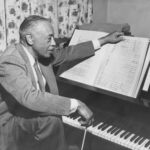
 Long known as the “Dean of African-American Classical Composers,” as well as one of America’s foremost composers, William Grant Still has had the distinction of becoming a legend in his own lifetime. On May 11, 1895, he was born in Woodville (Wilkinson County) Mississippi, to parents who were teachers and musicians. They were of Negro, Indian, Spanish, Irish and Scotch bloods. When William was only a few months old, his father died and his mother took him to Little Rock, Arkansas, where she taught English in the high school. There his musical education began–with violin lessons from a private teacher, and with later inspiration from the Red Seal operatic recordings bought for him by his stepfather.
Long known as the “Dean of African-American Classical Composers,” as well as one of America’s foremost composers, William Grant Still has had the distinction of becoming a legend in his own lifetime. On May 11, 1895, he was born in Woodville (Wilkinson County) Mississippi, to parents who were teachers and musicians. They were of Negro, Indian, Spanish, Irish and Scotch bloods. When William was only a few months old, his father died and his mother took him to Little Rock, Arkansas, where she taught English in the high school. There his musical education began–with violin lessons from a private teacher, and with later inspiration from the Red Seal operatic recordings bought for him by his stepfather.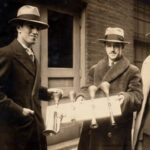
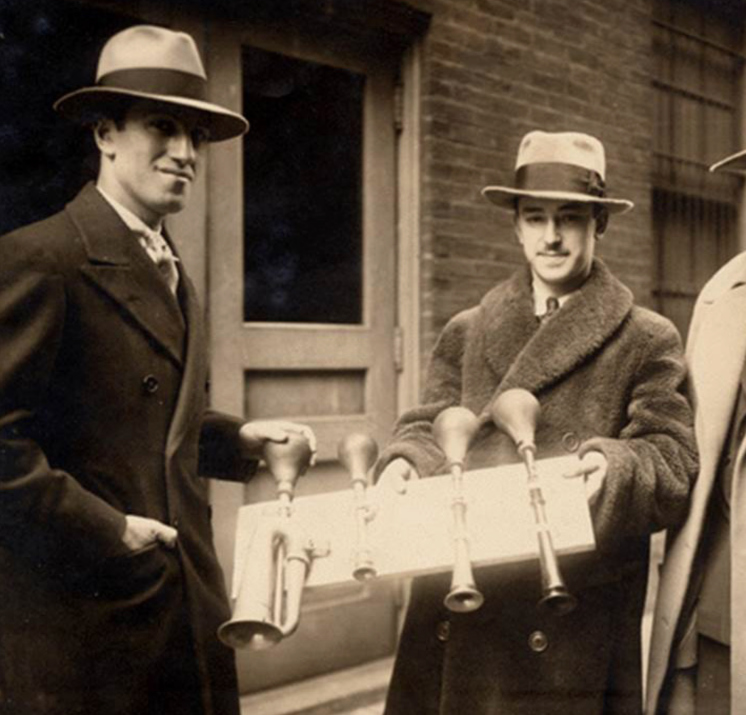

 Daniel Clarke Bouchard began playing the piano at the age of five and gave his first piano recital at the age of six. He received the Grand Prize at the Joy of Music Festival held at McGill University. In 2009, he won the gold medal at the Montreal Classical Music Festival. In 2010, he won Gold at the Quebec Music Educators Association Competition. In 2011, Daniel won first place at the Canadian Music Competition and received the Yamaha, Canimex and Gilles Chatel scholarships.
Daniel Clarke Bouchard began playing the piano at the age of five and gave his first piano recital at the age of six. He received the Grand Prize at the Joy of Music Festival held at McGill University. In 2009, he won the gold medal at the Montreal Classical Music Festival. In 2010, he won Gold at the Quebec Music Educators Association Competition. In 2011, Daniel won first place at the Canadian Music Competition and received the Yamaha, Canimex and Gilles Chatel scholarships.
